Surfactants and Interfacial Phenomena
Preface. 1 Characteristic Features of Surfactants. A Conditions Under Which Interfacial Phenomena and Surfactants Become Significant. B General Structural Features and Behavior of Surfactants. 1 General Use of Charge Types. 2 General Effects of the Nature of the Hydrophobic Group. I Characteristic Features and Uses of Commercially Available Surfactants. I.A Anionics. 1 Carboxylic Acid Salts. 2 Sulfonic Acid Salts. 3 Sulfuric Acid Ester Salts. 4 Phosphoric and Polyphosphoric Acid Esters. 5 Fluorinated Anionics. I.B Cationics. 1 Long-Chain Amines and Their Salts. 2 Acylated Diamines and Polyamines and Their Salts. 3 Quaternary Ammonium Salts. 4 Polyoxyethylenated (POE) Long-Chain Amines. 5 Quaternized POE Long-Chain Amines. 6 Amine Oxides. I.C Nonionics. 1 POE Alkylphenols, Alkylphenol "Ethoxylates". 2 POE Straight-Chain Alcohols, Alcohol "Ethoxylates". 3 POE Polyoxypropylene glycols. 4 POE Mercaptans. 5 Long-Chain Carboxylic Acid Esters. 6 Alkanolamine "Condensates," Alkanolamides. 7 Tertiary Acetylenic Glycols and Their "Ethoxylates". 8 POE Silicones. 9 N-Alkylpyrrolidones. 10 Alkylpolyglycosides. I.D Zwitterionics. 1 pH-Sensitive Zwitterionics. 2 pH-Insensitive Zwitterionics. I.E Newer Surfactants Based Upon Renewable Raw Materials. 1 a-Sulfofatty Acid Methyl Esters (SME). 2 Acylated Aminoacids. 3 N-Acyl L-Glutamates (AG). 4 N-Acyl Glycinates. 5 N-Acyl DL-Alaninates. 6 Other Acylated Aminoacids. 7 Nopol Alkoxylates. II Environmental Effects of Surfactants. II.A Surfactant Biodegradability. II.B Surfactant Toxicity To and Bioconcentration in Marine Organisms. III Some Useful Generalizations. References. Problems. 2 Adsorption of Surface-Active Agents at Interfaces: The Electrical Double Layer. I The Electrical Double Layer. II Adsorption at the Solid-Liquid Interface. II.A Mechanisms of Adsorption and Aggregation. II.B Adsorption Isotherms. 1 The Langmuir Adsorption Isotherm. II.C Adsorption from Aqueous Solution Onto Adsorbents with Strongly Charged Sites. 1 Ionic Surfactants. 2 Nonionic Surfactants. 3 pH Change. 4 Ionic Strength. 5 Temperature. II.D Adsorption from Aqueous Solution Onto Nonpolar, Hydrophobic Adsorbents. II.E Adsorption from Aqueous Solution Onto Polar Adsorbents without Strongly Charged Sites. II.F Effects of Adsorption from Aqueous Solution on the Surface Properties of the Solid Adsorbent. 1 Substrates with Strongly Charged Sites. 2 Nonpolar Adsorbents. II.G Adsorption from Nonaqueous Solution. II.H Determination of the Specific Surface Areas of Solids. III Adsorption at the Liquid-Gas (L/G) and Liquid-Liquid (L/L) Interfaces. III.A The Gibbs Adsorption Equation 60 III.B Calculation of Surface Concentrations and Area per Molecule at the Interface By Use of the Gibbs Equation. III.C Effectiveness of Adsorption at the L/G and L/L Interfaces. III.D The Szyszkowski, Langmuir, and Frumkin Equations. III.E Efficiency of Adsorption at the L/G and L/L Interfaces. III.F Calculation of Thermodynamic Parameters of Adsorption at the L/G and L/L Interfaces. III.G Adsorption from Mixtures of Two Surfactants. References. Problems. 3 Micelle Formation by Surfactants. I The Critical Micelle Concentration (CMC). II Micellar Structure and Shape. II.A The Packing Parameter. II.B Surfactant Structure and Micellar Shape. II.C Liquid Crystals. III Micellar Aggregation Numbers. IV Factors Affecting the Value of the CMC in Aqueous Media. IV.A Structure of the Surfactant. 1 The Hydrophobic Group. 2 The Hydrophobic Group. 3 The Counterion in Ionic Surfactants: Degree of Binding to the Micelle 139 4 Empirical Equations. IV.B Electrolyte. IV.C Organic Additives. 1 Class I Materials. 2 Class II Materials. IV.D The Presence of a Second Liquid Phase. IV.E Temperature. V Micellization in Aqueous Solution and Adsorption at the Aqueous Solution-Air or Aqueous Solution-Hydrocarbon Interface. V.A. The CMC/C20 ratio. VI CMCs in Nonaqueous Media. VII Equations for the CMC Based on Theoretical Considerations. VIII Thermodynamic Parameters of Micellization. IX Mixed Micelle Formation in Mixtures of Two Surfactants. References. Problems. 4 Solubilization by Solutions of Surfactants: Micellar Catalysis. I Solubilization in Aqueous Media. I.A Locus of Solubilization. I.B Factors Determining the Extent of Solubilization. 1 Structure of the Surfactant. 2 Structure of the Solubilizate. 3 Effect of Electrolyte. 4 Effect of Monomeric Organic Additives. 5 Effect of Polymeric Organic Additives. 6 Mixed Anionic-Nonionic Micelles. 7 Effect of Temperature. 8 Hydrotropy. I.C Rate of Solubilization. II Solubilization in Nonaqueous Solvents. II.A Secondary Solubilization. III Some Effects of Solubilization. III.A Effect of Solubilization on Micellar Structure. III.B Change in the Cloud Points of Aqueous Solutions of Nonionic Surfactants. III.C Reduction of the CMC. III.D Miscellaneous Effects of Solubilization. IV Micellar Catalysis. References. Problems. 5 Reduction of Surface and Interfacial Tension by Surfactants. I Efficiency in Surface Tension Reduction. II Effectiveness in Surface Tension Reduction. II.A The Krafft Point. II.B Interfacial Parameter and Chemical Structural Effects. III Liquid-Liquid Interfacial Tension Reduction. III.A Ultralow Interfacial Tension. IV Dynamic Surface Tension Reduction. IV.A Dynamic Regions. IV.B Apparent Diffusion Coefficients of Surfactants. References. Problems. 6 Wetting and Its Modification by Surfactants. I Wetting Equilibria. I.A Spreading Wetting. 1 The Contact Angle. 2 Measurement of the Contact Angle. I.B Adhesional Wetting. I.C Immersional Wetting. I.D Adsorption and Wetting. II Modification of Wetting by Surfactants. II.A General Considerations. II.B Hard Surface (Equilibrium) Wetting. II.C Textile (Nonequilibrium) Wetting. II.D Effect of Additives. III Synergy in Wetting by Mixtures of Surfactants. IV Superspreading (Superwetting). References. Problems. 7 Foaming and Antifoaming by Aqueous Solutions of Surfactants. I Theories of Film Elasticity. II Factors Determining Foam Persistence. II.A Drainage of Liquid in the Lamellae. II.B Diffusion of Gas Through the Lamellae. II.C Surface Viscosity. II.D The Existence and Thickness of the Electrical Double Layer. III The Relation of Surfactant Chemical Structure to Foaming in Aqueous Solution. III.A Efficiency as a Foaming Agent. III.B Effectiveness as a Foaming Agent. III.C Low-Foaming Surfactants. IV Foam-Stabilizing Organic Additives. V Antifoaming. VI Foaming of Aqueous Dispersions of Finely Divided Solids. References. Problems. 8 Emulsification by Surfactants. I Macroemulsions. I.A Formation. I.B Factors Determining Stability. 1 Physical Nature of the Interfacial Film. 2 Existence of an Electrical or Steric Barrier to Coalescence on the Dispersed Droplets. 3 Viscosity of the Continuous Phase. 4 Size Distribution of Droplets. 5 Phase Volume Ratio. 6 Temperature. I.C Inversion. I.D Multiple Emulsions. I.E Theories of Emulsion Type. 1 Qualitative Theories. 2 Kinetic Theory of Macroemulsion Type. II Microemulsions. III Nanoemulsions. IV Selection of Surfactants as Emulsifying Agents. IV.A The HLB Method. IV.B The PIT Method. IV.C The HLD Method. V Demulsification. References. Problems. 9 Dispersion and Aggregation of Solids in Liquid Media by Surfactants. I Interparticle Forces. I.A Soft (electrostatic) and van der Waals Forces: DLVO Theory. 1 Limitations of the DLVO Theory. I.B Steric Forces. II Role of the Surfactant in the Dispersion Process. II.A Wetting of the Powder. II.B Deaggregation or Fragmentation of Particle Clusters. II.C Prevention of Reaggregation. III Coagulation or Flocculation of Dispersed Solids by Surfactants. III.A Neutralization or Reduction of the Potential at the Stern Layer of the Dispersed Particles. III.B Bridging. III.C Reversible Flocculation. IV The Relation of Surfactant Chemical Structure to Dispersing Properties. IV.A Aqueous Dispersions. IV.B Nonaqueous Dispersions. References. Problems. 10 Detergency and Its Modification by Surfactants. I Mechanisms of the Cleaning Process. I.A Removal of Soil from Substrate. 1 Removal of Liquid Soil. 2 Removal of Solid Soil. I.B Suspension of the Soil in the Bath and Prevention of Redeposition. 1 Solid Particulate Soils: Formation of Electrical and Steric Barriers Soil Release Agents. 2 Liquid Oily Soil. I.C Skin Irritation. I.D Dry Cleaning. II Effect of Water Hardness. II.A Builders. II.B Lime Soap Dispersing Agents. III Fabric Softeners. IV The Relation of the Chemical Structure of the Surfactant to Its Detergency. IV.A Effect of Soil and Substrate. 1 Oily Soil. 2 Particulate Soil. 3 Mixed Soil. IV.B Effect of the Hydrophobic Group of the Surfactant. IV.C Effect of the Hydrophilic Group of the Surfactant. IV.D Dry Cleaning. References. Problems. 11 Molecular Interactions and Synergism in Mixtures of Two Surfactants. I Evaluation of Molecular Interaction Parameters. I.A Notes on the Use of Equations 11.1-11.4. II Effect of Chemical Structure and Molecular Environment on Molecular Interaction Parameters. III Conditions for the Existence of Synergism. III.A Synergism or Antagonism (Negative Synergism) in Surface or Interfacial Tension Reduction Efficiency. III.B Synergism or Antagonism (Negative Synergism) in Mixed Micelle Formation in Aqueous Medium. III.C Synergism or Antagonism (Negative Synergism) in Surface or Interfacial Tension Reduction Effectiveness. III.D Selection of Surfactants Pairs for Optimal Interfacial Properties. IV The Relation between Synergism in Fundamental Surface Properties and Synergism in Surfactant Applications. References. Problems. 12 Gemini Surfactants. I Fundamental Properties. II Interaction with Other Surfactant. III Performance Properties. References. Problems. Answers to Problems. Index.
{{comment.content}}
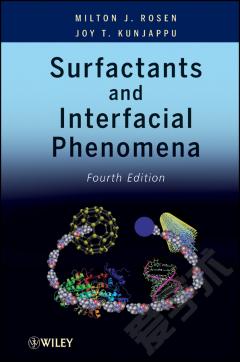
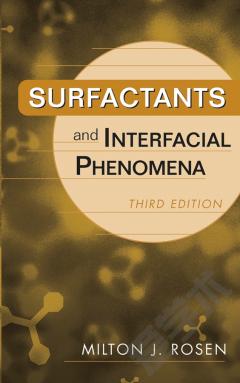
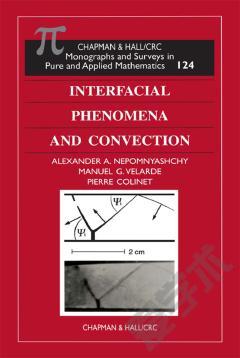

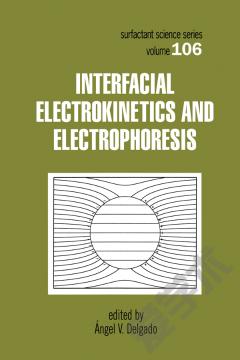
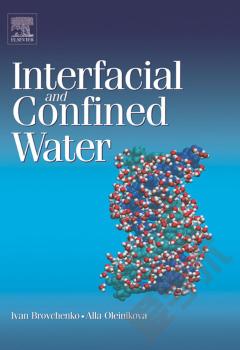
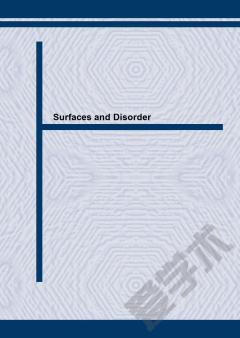

 京公网安备 11010802027623号
京公网安备 11010802027623号